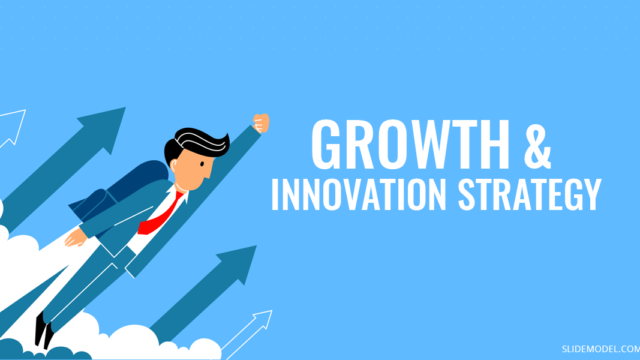
The most successful teams and workplaces are known to be oriented on growth. But what exactly the much buzzed growth mindset popularized by the likes of Microsoft and LinkedIn entails?
In short, it stands for switching from a highly individualist culture where everyone is expected to act as the smartest people in the room, to creating an environment that brings out the best in people as Microsoft CEO puts it.
In this post we’ll talk about what it takes to build a learning-oriented culture at the workplace and how managers can help their teams switch from fixed mindset to the growth one.
What is Growth Mindset?
This term was first proposed by Dr. Carol Dweck, psychologist and professor at Stanford University who has spent 30 years studying mindsets. Though much of her work is related to education, it has spilled over into the workplace as well.

She has published a number of articles and even a book touching on the Growth Mindset vs. Fixed Mindset manifestation in work environments. Below are summaries of her definitions.
The Fixed Mindset: This is the belief that each person has certain intelligence and/or talent, and that those are fixed qualities. Those with greater intelligence or talent are destined for greater success. This is a mindset that basically “stalls” people with lower intelligence or talent. In a business environment, this means that a few people at the top run everything according to their beliefs in superiority, and others are simply to do their bidding.
The Carol Dweck Growth Mindset definition is the belief that anyone can continue to develop their skills and talents through education, hard work, motivation, and a dedication to developing themselves. Success is not determined by innate talent or intelligence but, rather, by personal development.

Growth Mindset template by SlideModel
In her book, Dweck further explains why leaders and teams with growth mindset always outpace those with fixed mindsets by telling a story about Lee Iacocca, a new CEO at Chrysler in the 80s, previously fired by Ford. According to Dweck, Iacocca acts as a typical example of fixed-mindset leader. He responds to failure with anger instead of seeing it as a learning opportunity. His negative thinking prompts him to make lackluster business decisions such as demanding that the American government impose tariffs and quotas on their rival. He did not want to take responsibility for the damage he’s made and becomes somewhat abusive and controlling towards the set of employees. Under such treatment, the company does not move forward as everyone merely worry about being judged and play it safe and retort to groupthink to please the upper management, instead of proposing bold, innovative ideas. As it’s easy to guess at this point, the Chrystler did not initially thrive under his leadership. But once Iacocca realized his mistakes and switched to the new line of thinking – aimed at growth – Chrystler’s business made a positive U-turn as well.
Lee remained in history as one of the 18th-greatest American CEOs of all time, and he has also become a staple of B-school case studies. Overcoming a fixed mindset on a personal or team level, however, isn’t that simple, but there are several steps managers can take to nurture a growth mindset culture.
How to Develop a Growth Mindset and Translate It to Effective Management in Business
When a fixed mindset has been the standard in your organization, just reading some growth mindset quotes from gurus in the field, even though they may provide insights, will not cut it.
You will need to learn and practice new managerial skills before you can transmit them to others. There are numerous coursework offerings that incorporate the teachings of Carol Dweck, and perhaps you should consider those as a start. Be mindful, as well, that transforming traditional management skills to growth mindset approaches involves a paradigm shift that some managers will not be able to make.
Below are several best practices that should help you understand how to practice growth mindset leadership and help your team members develop a growth mindset themselves.
1. Establish an Environment of Openness, Transparency, and Risk-Taking
In traditional fixed mindset environments, team members are fearful of criticizing the status quo and making suggestions, much less taking initiative to develop new solutions to old problems. Fixed mindset leaders don’t like these kinds of growth mindset activities, often because they find it threatening to their power and authority.
One of the beginning growth mindset activities for adults who have been restrained is to allow anonymity. Present a problem that needs a new solution. And allow anonymous “thinking outside the box” solutions will begin to get them into a growth mindset. Present those anonymous solution responses publicly to the entire team and begin discussions. Over time, as these discussions occur and team members become more comfortable, they will begin to open up more in a public way.
2. Embrace Failure and Encourage Teams to Accept Failure Too
Everyone fails. It is not the failures that define ultimate success. It is how failures are dealt with and how people move on from those failures that matter. In a fixed mindset, team members will not be innovative because of fear of failure. And if they do fail, they will attempt to hide what they see as personal shortcomings.
Part of how to lead a team in a growth mindset is to embrace failure as an opportunity to analyze, to look at options for fixing, and to take new innovative risks to prevent such types of failures in the future. When employees do not fear failure, they will be creative problem-solvers, knowing that they will not face disgrace if those solutions don’t work.

3. Speak to Your Own Challenges and Risks Openly
Fixed mindset leaders hide their failures and do not speak of the challenges they have faced in their own careers. They cannot admit setbacks because they will lose their positions as gurus with all of the answers. Growth mindset management means that leaders speak to their challenges and failures openly and how they dealt with them. When they do this, their team members will feel comfortable doing the same.
If there are individually assigned tasks that prevent challenges, they can then be presented openly, and peers can contribute their innovative and creative solutions. All of this makes for employees who feel a sense of comradery, as opposed to competition, and better solutions are designed. Everyone gets credit, not just a leader who may enforce his own solutions on everyone, no matter how flawed they may be.
4. Promote Development, not Fixed Skills and Talents
Suppose a member of a department is primarily tasked with sales funnel development for the company’s marketing initiatives. That task responsibility is based on their educational background and specific skills and talents they have.
Now, suppose that this individual has been “schooled” in a growth mindset and begins to develop a desire to pursue some new challenges and opportunities within the organization that would result in a different career.

The fixed mindset manager will not encourage such thinking and will certainly not support any development this employee desires. Growth mindset management, on the other hand, provides support and resources. Encouraging team members to stretch themselves into new areas of development can only ultimately benefit the organization, as well as retain valuable employees.
Another part of developing a growth mindset in your team members is to provide some of the same training and development that you took yourself. You can begin with Dweck’s Growth Mindset Ted Talk, which every staff member should view, in order to understand their own potential for change.
In helping employees or team members focus on development and a growth mindset, there are also other educational and training materials that leaders can present. One highly recommended is the book, The 7 Habits of Highly Effective People by Stephen Covey. In it, he speaks to the importance of independence (in thought and action), interdependence (the value of a win-win attitude among members of teams and their leaders), and continuous development (commitment to continuous personal and professional growth/learning).
Recommended presentation template: Seven Habits Covey PowerPoint Template by SlideModel
5. Recognize and Value Individual Accomplishments
Team successes should be recognized as achievements of the entire group, not just the manager. By the same token, individual accomplishments within the group must also be recognized and even get rewarded in some way. These activities help in building a growth mindset in which others are willing to step outside of their comfort zones to take initiative and reasonable risks as well.
Rewarding a growth mindset in the workplace sends a clear message that you know how to be a good manager who will support initiative and risk-taking.
Recommended presentation template: Talent Management Frameworks PowerPoint Template by SlideModel
6. Look for Fixed Mindset Backslides and Address Them
When people have existed in a fixed mindset environment, change does not come overnight, nor will it necessarily be entrenched quickly. It is a process of making a paradigm change.
When you or other backslide into fixed mindset actions, do not condemn. Recognize it for what it is and gently ease yourself or your employee back into different action that reflects your new environment. Over time, continued practice will result in mastery, just like any learning.

Conclusions
Growth mindset in business requires leaders with solid people management skills, with a “we” vs. a “me” mentality, and a commitment to the following:
- Openness and transparency in communication
- Fostering reasonable risk-taking with the understanding that failure is a normal part of moving a business forward
- Group development activities that foster team skills but also a focus on encouraging and supporting individual needs/desires for development and growth
- Creative problem-solving activities that foster any out-of-the-box thinking without criticism or put-downs.
- Rewarding innovative and creative thinking and accomplishments of both the team and individual within a team.
- An overriding belief that every individual can develop and grow, not based upon innate intelligence or talent, but based upon their motivation and their willingness to work hard.
Just as individuals can develop a growth mindset for themselves, businesses and their leaders can embrace these same principles as a company culture. The end result, according to the research by Dweck, is a vibrant, forward-looking organization that achieves success.



